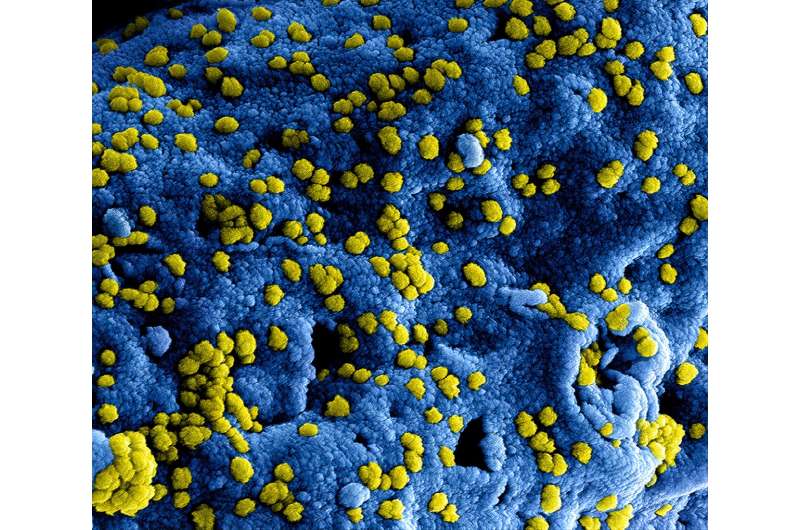This article has been reviewed according to Science X's editorial process and policies. Editors have highlighted the following attributes while ensuring the content's credibility:
fact-checked
peer-reviewed publication
trusted source
proofread
Scientists discover protein required for an effective immune response to invading bacteria

A team led by researchers at Massachusetts General Hospital (MGH) has discovered a protein that plays critical roles in alerting the body to a bacterial infection and initiating an effective immune response to fight back against the invasion.
They found that when certain bacteria are ingested by human immune cells, the protein, called NLRP11, can recognize these bacteria through a portion of their outer coat, filling a previous gap in this recognition pathway.
NLRP11 is present in humans but not in mice, which are the most common laboratory model for human infection. The group's discovery, which is published in Science Immunology, may therefore help investigators develop improved "humanized" mouse models of infections and diseases involving the immune system.
For the study, the researchers focused on macrophages, which are immune cells that ingest and degrade microorganisms (such as bacteria) and stimulate the action of other immune cells.
A genetic screen revealed that macrophages require the NLRP11 gene to become fully activated after ingesting certain bacteria. Mechanistically, the team found that the NLRP11 protein that's produced from the gene enables a macrophage to sense the presence of bacterial lipopolysaccharide molecules within its interior.
Upon sensing bacterial lipopolysaccharide molecules, NLRP11 triggers an inflammasome, an intracellular multimeric protein complex that turns on a pathway that activates inflammatory responses to control infection.
In this case, NLRP11 leads to activation of an enzyme called caspase-4 that is a component of this inflammasome. These actions by NLRP11 result in an effective defense by the immune system that kills invading bacterial cells and prevents widespread infection in the body.
"NLRP11 is present in humans and other primates but absent in mice, likely explaining why it has been missed previously, as most screens looking for innate immune signaling molecules have been carried out in mice," says senior author Marcia B. Goldberg, MD, an investigator in the Division of Infectious Diseases at MGH and a professor in the Departments of Medicine and Microbiology at Harvard Medical School. "Our results demonstrate that NLRP11 is a previously missing link and a component of the human caspase-4 inflammasome activation pathway."
Goldberg and her colleagues are conducting even more thorough studies of NLRP11's functions in human macrophages, and they are comparing the differences that result from the presence of NLRP11 in human macrophages and its absence in mouse macrophages. "This may enable the development of mouse macrophages (and mice) that are more similar to human macrophages (and humans) for bacterial infection experiments," she says.
Additional co-authors include Maricarmen Rojas-Lopez, María Luisa Gil-Marqués, Vritti Kharbanda, Amanda S. Zajac, Kelly A. Miller, Thomas E. Wood, Austin C. Hachey, and Keith T. Egger.
More information: Maricarmen Rojas-Lopez et al, NLRP11 is a pattern recognition receptor for bacterial lipopolysaccharide in the cytosol of human macrophages, Science Immunology (2023). DOI: 10.1126/sciimmunol.abo4767


















